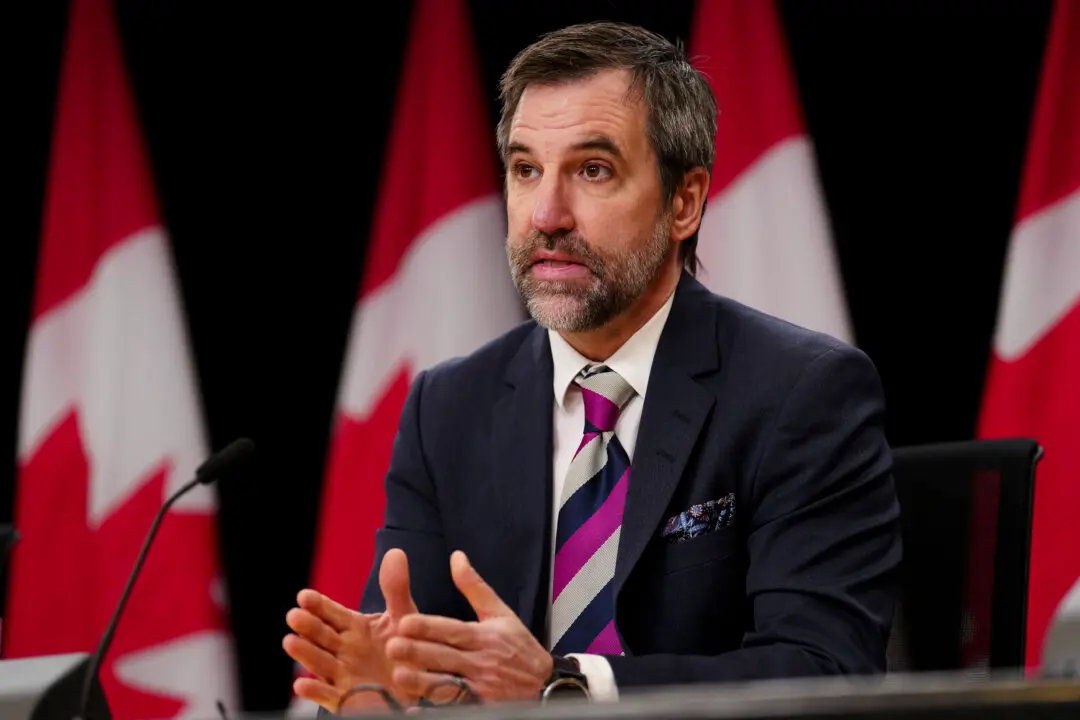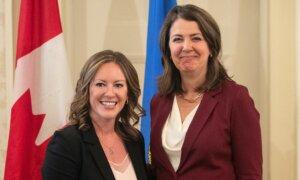Oil and gas companies will be required to reduce emissions by one-third by the year 2032 under new regulations announced on Nov. 4 by Environment Minister Steven Guilbeault.
The draft regulations call for upstream oil and gas operations to lower their greenhouse gas emissions by 35 percent below 2019 levels sometime between 2030 and 2032.
The regulations will be published on Nov. 9 and be open for consultation until Jan. 8, 2025, while the final regulations are expected to be published in the spring of 2025. The regulations are expected to come into force in 2026.
Speaking to reporters in Ottawa, Guilbeault argued that the measures were necessary because oil and gas sector accounts for a third of Canada’s greenhouse gas emissions. According to the most recent National Inventory Report, the sector accounted for 31 percent of emissions in 2022, making it the country’s largest contributor to emissions.
Guilbeault said said oil companies should contribute more to “pollution-cutting projects” as operating profits in the sector have risen “tenfold” from $6.6 billion in 2019 to $66.6 billion in 2022.
“So we’re asking the oil and gas sector to invest their record profits into pollution-cutting projects; projects that can create and keep good jobs,” he said.
Guilbeault said the regulations would create a cap-and-trade system that rewards low-polluting facilities and incentivizes higher-polluting facilities to invest in green technologies. Ottawa first introduced the cap and trade regulatory framework in December 2023, which gives companies a limited number of emissions credits that decline over time until the sector achieves net-zero emissions.
Companies in the sector that cut their emissions faster will be able to buy a limited number of carbon offset credits or contribute to a decarbonization fund, lowering the emissions requirement from 35 percent to between 20 and 23 percent.
“Let me be clear, this was carefully designed through rigorous consultations. It goes after pollution, not production,” Guilbeault added.
The federal Conservative Party said in a Nov. 4 statement that the proposed emissions cap amounted to “attacking Canadian energy workers” and would “kill Canadian jobs, raise the cost of energy and send billions of dollars to dictators overseas.”
“Canada’s energy sector is the country’s single largest private sector investor in clean technologies,” said the statement. “It has a clear record of reducing emissions and adhering to the highest standards of environmental protection.”
Natural Resources Minister Jonathan Wilkinson said at the press conference on Nov. 4 that the federal government’s plan would help support the 400,000 Canadian workers in the oil and gas industry, while also creating demand for thousands of skilled workers in decarbonization technologies. Wilkinson also noted that oil and gas production is expected to increase over the next few years.
When Ottawa first announced the emissions cap in 2023, Alberta Premier Danielle Smith called it an “intentional attack” on the economy of the province by the federal government, and pledged to fight any cap imposed by Ottawa.
Saskatchewan Premier Scott Moe also said at the time the regulations would have “serious economic impacts on Canadians and limit our sustainable Canadian energy products from providing heat and electricity to the world.”







